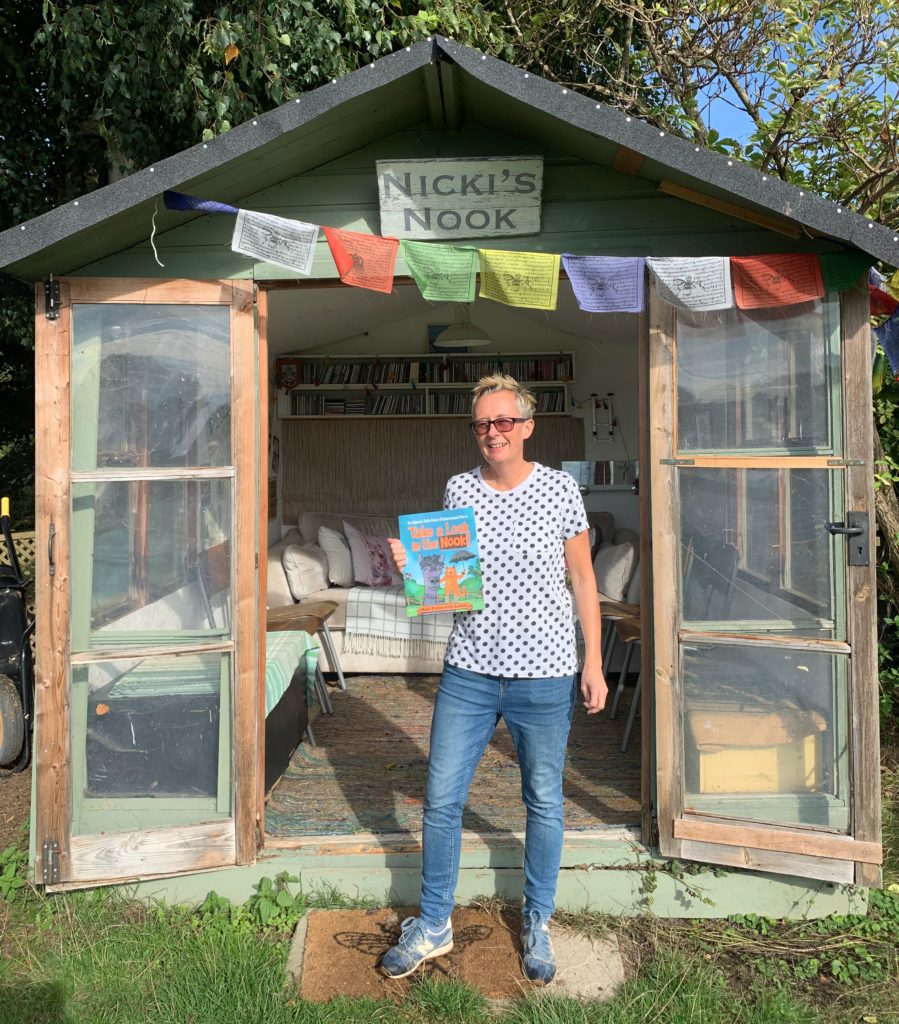Why Writers Need Audaciously Attainable Goals
Writers dream big but how often do we set clear goals and plan for them?
In early January, I put this question to participants gathered for my webinar on “Planning Your Writing Year.” Most replied that they operated on intuition, rather than a ten-point plan. Or any plan.
There would be nothing wrong with intuition, if it worked. But most of the writers I know are regularly waylaid by writer’s block and self doubt, certain that they “aren’t writing enough” – though they have no notion of what “enough” might be.
Is this our inevitable fate, at the whim of the flighty Muses? No, I don’t think our writing lives must inevitably feel so fraught. I believe that we can lay out a welcome mat for Inspiration, along with some helpful signposts, by setting Audaciously Attainable Goals (AAGs).
Here are my thoughts on how AAGs transform dreams into books, scripts, screenplays and more.
First, a note on . . .
Choosing Audaciously Attainable Goals
AAGs are calls to action.
They are:
- Viscerally exciting – evoking a physical sense of yearning.
- Out of reach, yet attainable – They are terrifying but also tantalising, keeping us focused, a little edgy, but optimistic. They wouldn’t be so exciting if you didn’t feel, at first, that they just might be a reach too far . . . or maybe not!
- Specific and time-bound – with deadlines and specs.
- Within our control – for example, submitting a polished story to a competition, rather than winning it.
- Transformative – prompting us to learn more, strengthen our skills, overcome inner demons and in some way – big or small – to improve our external circumstances and help others.
One my coaching students, Nicki Fisher, set a quintessential AAG when she gave herself eight months to write and self-publish her first picture book, to be sold in her farm’s tearoom during the summer tourist season. Here was a race-to-the-finish challenge that she had long dreamed of accomplishing. Nicki reported that Take a Look in the Nook was transformative because writing about her favorite alpaca – a misfit who finds his niche in the pack – helped her understand her own journey from withdrawn child to forceful social entrepreneur. The book also attracted new business, enabled visitors to bring home “the joy of the farm” and inspired local children to write animal stories of their own.
We know when we are moving towards an AAG by the Ultra HD quality it brings to daily life.
AAGs enrich the writer’s work and world because . . .
Audaciously Attainable Goals Boost Our Energy
At the beginning of my webinar, I invited participants to visualize thrilling outcomes for their writing and to draft their primary writing goals for the year. Across the Zoomiverse, I could feel their sense of purpose rise.
The next morning, one participant reported that, “I started off the day with 15 mins of writing before my boys woke up” and another invited a friend to serve as an accountability buddy to help her establish her writing routine.
AAGs are magnetic, luring us to our desks to work late on week nights and early on weekend mornings.
Not only do they spur us to work harder, but . . .
Audaciously Attainable Goals Steer Writers Towards Scary Steps
AAGs are temporarily out of reach because we don’t yet have the wisdom, skills and/or resources they require. To bridge the gap, working harder will not suffice. We need to work DIFFERENTLY – often, committing to the measures that trigger our deepest insecurities or discomfort. Taking the steps we previously resisted is thrilling because it opens vistas of new possibilities – for this AAG, and beyond.
Twenty years ago, when I was a newly qualified tax attorney, my desire to write drove me to defy my firm’s round-the-clock culture and enroll in a weekly evening playwriting class. Discovering that this was possible, I continued to treat writing as non-negotiable for the remainder of my corporate law career. For one of my coaching students, the first essential step was to begin calling herself an artist – breaking her family’s unwritten taboo. Often, the scariest step of all is to tell others about our writing projects and to ask for their help. But this is also one of the most rewarding steps because . . .
Audaciously Attainable Goals Rally Others to Our Mission and Build Connection
Writing may be a solitary activity, but writers flourish within communities. We need mentors, advisors and fellow travelers to help us bridge the gap in wisdom, skills and resources separating us from our AAGs.
AAGs force us to do what humans often find most difficult, which is to ask for help. In the process, we learn, grow and forge precious bonds.
Midway through my first full-length play, Lizzy, Darcy and Jane, with a production booked, I hit a stretch of writer’s block – terrifying, since the script was due in two months (as was my first baby). I emailed an SOS (“save our script”) to a mentor from my writers development group (Peter Vincent, co-author of the BBC sitcom, Sorry!) His next-day dispatch – gallantly addressed to “Dear Miss Austen” – kicked away my mental blocks, revolutionized my understanding of story structure and forever cemented our friendship. I have since done my best to share Peter’s wisdom with other writers in a bind.
The value of what I have learned from my collaborators dwarfs the modest financial returns of my creative collaborations … Which brings me to a cautionary note.
If External Reward is the Primary Motive For a Audaciously Attainable Goals, It Is Likely to Disappoint
Most of us, if we’re honest, start pursuing AAGs to obtain an external prize – perhaps money (or recognition), a book deal, or the prospect of seeing our manuscripts in print.
Such incentives are useful in defining the AAG, because they furnish parameters and deadlines. But we cannot pin our hopes, happiness or sense of self worth to their fruition.
External rewards for writing are generally unpredictable, uncertain, infrequent and delayed. When we achieve them, the satisfaction is often surprisingly short-lived. James Clear explains in Atomic Habits that humans are wired, as a matter of evolutionary survival, to get a more powerful dopamine surge from anticipating and pursuing our goals, than from actually attaining them.
If the pursuit of goals brings happiness, then the ultimate reward for accomplishing the AAG is not the external payoff (whether granted or deferred) but rather, the Even More Audaciously Attanableable Goal to which it leads. With the fears we’ve overcome, the discoveries we’ve made, the skills we’ve mastered and the relationships we’ve built, we’re ready to be more audacious than ever the next time around.
A flexible but robust framework can support your AAG through the year. For a free copy of my 10-step Goal Setting Framework, e-mail me at joanna.norland@gmail.com, or message me on Facebook.




No comments yet.